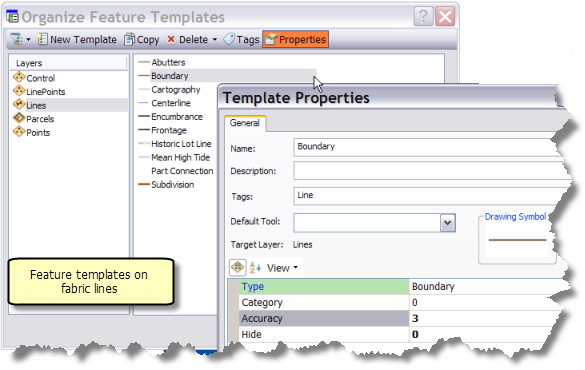Available with Standard or Advanced license.
What are feature templates?
In the ArcGIS editing environment, features are created through the use of feature templates. Feature templates define all the information required to create a feature: the layer where a feature will be stored, the attributes a feature is created with, and the default tool used to create that feature. If templates are not present when you start editing, they are automatically created for each layer in the current editing workspace. Templates are saved in the map document (.mxd) and the layer file (.lyr).
Feature templates and the parcel fabric
Feature templates are created for parcel fabric sublayers in the current editing workspace. When defining feature templates for a parcel fabric sublayer, you do not need to set a default tool, as parcels are created and edited with only one tool in the parcel fabric.
Feature templates can help maximize editing efficiency and minimize attribution error. For example, when creating parcels, you can use a template on the lines sublayer that sets a specific accuracy and category value for a particular line type. In the following example, feature templates are defined on the parcel fabric lines sublayer, which is displayed by line type. The Boundary template sets the line category to 0 (Boundary) and the line accuracy to 3.

In the parcel traverse grid, when the Boundary template is specified for a parcel traverse line, the line category is automatically set to 0 and the line accuracy is set to 3.
Any additional attributes that you add to fabric tables can also be automatically populated with specific values through a feature template.